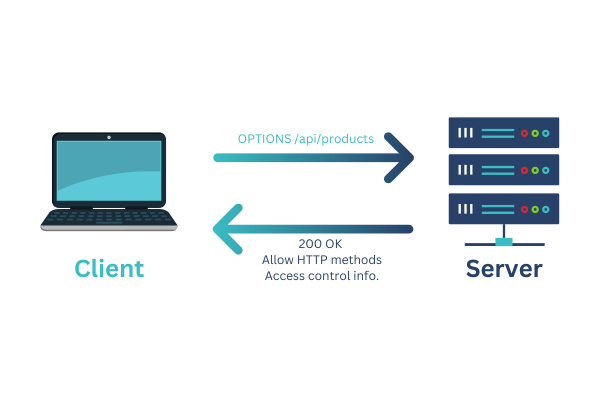The OPTIONS method in REST API is a lesser-known but indispensable tool for developers and web service consumers alike. It serves two primary functions: discovering the capabilities of a REST API endpoint and ensuring secure cross-origin resource sharing (CORS).
In this comprehensive guide, we’ll delve into the intricacies of the OPTIONS method in REST API, exploring its components, benefits, potential drawbacks, and how it plays a vital role in modern web development.
What Is the OPTIONS Method in REST API?
In the world of REST APIs, the OPTIONS method is a type of HTTP request that acts as a pre-flight check before your main request. It’s like asking a server, “Hey, what can I do with this resource?” or “Am I allowed to access this from my domain?”

Components of an OPTIONS Request and Response
- Request:
- HTTP Verb: OPTIONS
- Endpoint (URI): The specific resource you’re inquiring about (e.g., /api/products)
- Headers: May include authentication tokens or specific access headers.
- Response:
Advantages of OPTIONS Method
- CORS Compliance: Enables cross-origin requests (requests from a different domain than the API server) while maintaining security.
- Pre-flight Optimization: Reduces unnecessary requests by checking CORS permissions in advance.
- API Discovery and Documentation: Provides valuable information about the API’s capabilities, including supported methods and headers.
- Enhanced Security: Helps mitigate cross-site request forgery (CSRF) attacks and other vulnerabilities.
The Downsides of the OPTIONS Method
- Increased Complexity: Setting up and managing CORS configurations can be tricky.
- Potential Performance Overhead: Preflight requests can add a slight delay, especially for frequent API interactions.
- Potential for Information Leakage: The response to an OPTIONS request might inadvertently reveal details about the API’s structure.
Preflight Calls: The Cornerstone of Cross-Origin Resource Sharing (CORS)
In the context of REST APIs, preflight calls are essentially OPTIONS requests that web browsers send automatically before making cross-origin requests (e.g., a request from a JavaScript app on one domain to an API hosted on a different domain). The browser sends the OPTIONS request to check if the server allows the actual request and, if so, under what conditions.
When to Use the OPTIONS Method
- Cross-Origin Requests: Whenever your frontend application is making requests to an API on a different domain, use the OPTIONS method to ensure CORS compliance and avoid unexpected errors.
- Dynamic API Discovery: If you’re building client applications that need to dynamically discover and interact with REST APIs, the OPTIONS method can provide valuable metadata about the API’s capabilities.
FAQs: OPTIONS Method in REST API
Q: Are OPTIONS requests always required for CORS?
Q: How do I implement the OPTIONS method in my REST API?
A: You’ll need to configure your server to handle OPTIONS requests and respond with the appropriate CORS headers.
Q: Is the OPTIONS method specific to REST APIs?
A: No, it’s part of the HTTP protocol and can be used with other types of web services as well.
Q: How does the OPTIONS method relate to preflight requests in CORS?
A: Preflight requests are OPTIONS requests. Browsers send them automatically before certain cross-origin requests to check if the server allows them, including which HTTP methods and headers are permitted. This is a crucial step in ensuring security and preventing unauthorized cross-origin interactions.
Q: Can I customize the information returned in an OPTIONS response?
A: Yes, you can tailor the information in the OPTIONS response to suit your API’s needs. For example, you can include custom headers to provide additional metadata or instructions to clients. However, it’s essential to include the required CORS headers (Access-Control-Allow-Origin, Access-Control-Allow-Methods, Access-Control-Allow-Headers) if you want to enable cross-origin requests.
Q: Are there any security risks associated with allowing OPTIONS requests?
A: The OPTIONS method in REST API itself is not inherently insecure. However, if not configured correctly, the response could unintentionally reveal sensitive information about your API’s structure or server configuration. Always review your CORS configuration to ensure you’re not exposing unnecessary details.